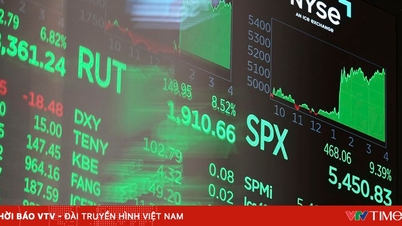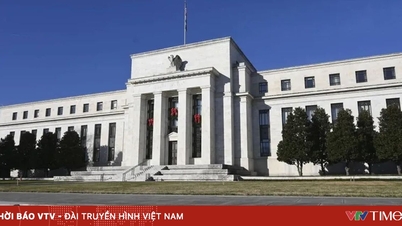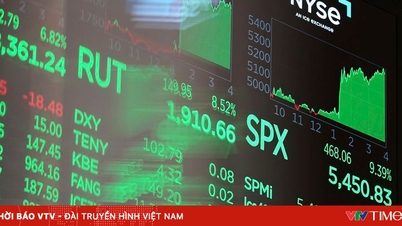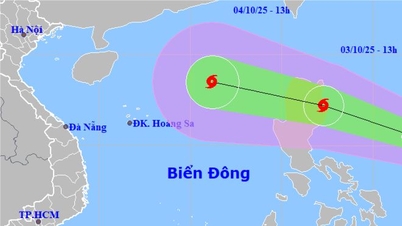SGGP
As expected, the US Federal Reserve (FED) announced its decision to keep interest rates unchanged at 5.25% - 5.50%. Following the announcement, global stock markets rose sharply, but gold prices were under pressure to fall.
Adjust accordingly
This is the second consecutive meeting that the Federal Open Market Committee (FOMC), the FED's policymaking body, has decided to keep interest rates unchanged, after a series of 11 increases since March last year. According to FED Chairman Jerome Powell, the decision was made based on signs of surprising growth in the US economy in the third quarter: 4.9% growth, higher than economists' forecasts.
Nonfarm payrolls increased by 336,000 in September, also exceeding forecasts. The Fed's latest statement also noted that with job gains remaining strong and inflation rising, the Fed will continue to consider "the extent to which additional policy accommodation may be appropriate to return inflation to its 2 percent objective over time."
The probability that the Fed will continue to raise interest rates in January 2024 has now dropped to 25%, compared to about 40% previously.
The FED's announcement caused the stock market to increase sharply. In the trading session on November 2, global stock indexes were filled with green. At the end of the session at the New York trading market, the Dow Jones Industrial Average increased by 221.71 points (0.67%) to 33,274 points, the S&P 500 increased by 44.06 points (1.05%) to 4,237 points, while the Nasdaq technology index increased by 210.23 points (1.64%) to 13,061.47 points. The European STOXX 600 stock index increased by 0.67%, the global MSCI stock index increased by 0.94%.
Gold demand falls
Meanwhile, spot gold fell 0.3% to $1,976.39 an ounce. US gold futures also fell 0.3% to $1,987.50 an ounce. Spot gold hit $2,009.29 an ounce last week as investors sought refuge in the precious metal amid the Middle East conflict. This was the first time gold prices crossed the important $2,000 an ounce mark since mid-May.
The World Gold Council (WGC) quarterly gold demand trends report showed that global gold demand, excluding over-the-counter (OTC), or off-exchange, trading, fell 6% in the third quarter as central bank purchases fell below last year's record high and jewelers' purchases fell.
However, gold demand in the third quarter was still 1,147.5 tonnes, 8% higher than the five-year average. Between January and September this year, central banks bought 800 tonnes of gold, the highest level of purchases in the same period since 2000.
Source


![[Photo] Hanoi morning of October 1: Prolonged flooding, people wade to work](https://vphoto.vietnam.vn/thumb/1200x675/vietnam/resource/IMAGE/2025/10/1/189be28938e3493fa26b2938efa2059e)


![[Photo] President of the Cuban National Assembly visits President Ho Chi Minh's Mausoleum](https://vphoto.vietnam.vn/thumb/1200x675/vietnam/resource/IMAGE/2025/10/1/39f1142310fc4dae9e3de4fcc9ac2ed0)

![[Photo] Keep your warehouse safe in all situations](https://vphoto.vietnam.vn/thumb/1200x675/vietnam/resource/IMAGE/2025/10/1/3eb4eceafe68497989865e7faa4e4d0e)

























































































Comment (0)